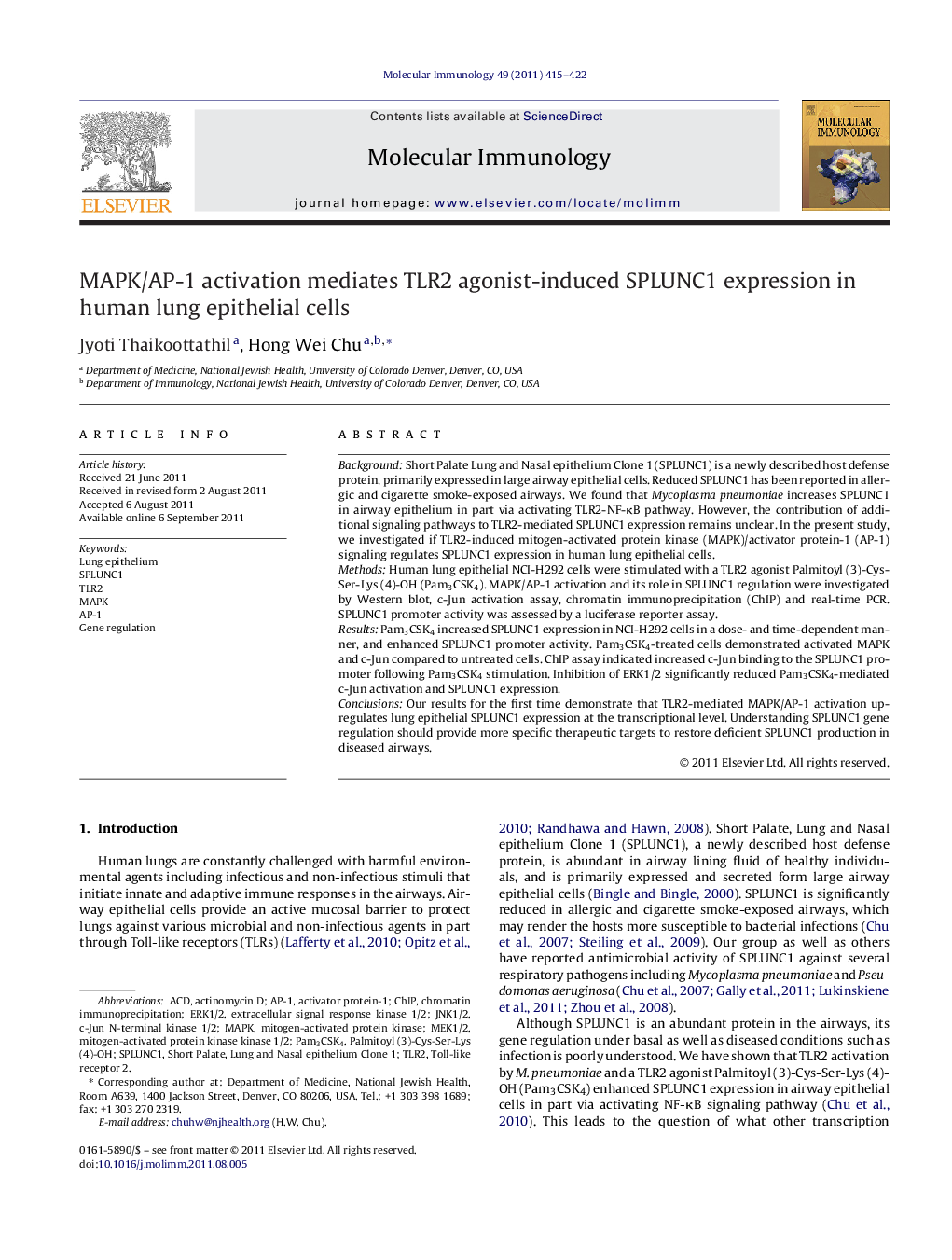| Article ID | Journal | Published Year | Pages | File Type |
|---|---|---|---|---|
| 2831288 | Molecular Immunology | 2011 | 8 Pages |
BackgroundShort Palate Lung and Nasal epithelium Clone 1 (SPLUNC1) is a newly described host defense protein, primarily expressed in large airway epithelial cells. Reduced SPLUNC1 has been reported in allergic and cigarette smoke-exposed airways. We found that Mycoplasma pneumoniae increases SPLUNC1 in airway epithelium in part via activating TLR2-NF-κB pathway. However, the contribution of additional signaling pathways to TLR2-mediated SPLUNC1 expression remains unclear. In the present study, we investigated if TLR2-induced mitogen-activated protein kinase (MAPK)/activator protein-1 (AP-1) signaling regulates SPLUNC1 expression in human lung epithelial cells.MethodsHuman lung epithelial NCI-H292 cells were stimulated with a TLR2 agonist Palmitoyl (3)-Cys-Ser-Lys (4)-OH (Pam3CSK4). MAPK/AP-1 activation and its role in SPLUNC1 regulation were investigated by Western blot, c-Jun activation assay, chromatin immunoprecipitation (ChIP) and real-time PCR. SPLUNC1 promoter activity was assessed by a luciferase reporter assay.ResultsPam3CSK4 increased SPLUNC1 expression in NCI-H292 cells in a dose- and time-dependent manner, and enhanced SPLUNC1 promoter activity. Pam3CSK4-treated cells demonstrated activated MAPK and c-Jun compared to untreated cells. ChIP assay indicated increased c-Jun binding to the SPLUNC1 promoter following Pam3CSK4 stimulation. Inhibition of ERK1/2 significantly reduced Pam3CSK4-mediated c-Jun activation and SPLUNC1 expression.ConclusionsOur results for the first time demonstrate that TLR2-mediated MAPK/AP-1 activation up-regulates lung epithelial SPLUNC1 expression at the transcriptional level. Understanding SPLUNC1 gene regulation should provide more specific therapeutic targets to restore deficient SPLUNC1 production in diseased airways.
► TLR2 activation promotes human lung epithelial SPLUNC1 expression at the transcriptional level. ► ERK1/2 and c-Jun activation levels increases following TLR2 agonist stimulation. ► c-Jun binds to SPLUNC1 promoter, and subsequently enhances its transcription. ► SPLUNC1 may serve as a new therapy to improve mucosal immunity in allergic or cigarette smoke-exposed airways.
